How will the fight of the Russian “Vityaz” with the advanced Israeli “Barak-8ER” end? Market and theater dominance
Anti-aircraft missile systems with a semi-active radar guidance system have gained immense popularity in the structures of the air defense forces of the leading countries of the world, beginning with the end of the 70-s. last century and ending with the second decade of the XX century. The best complexes of this kind with this method of guidance can be considered: long-range air defense systems С-200 (in the versions “Angara”, “Vega” and “Dubna”), which distinguished themselves by effective interception of the Israeli E-2C; The 2K12 “Cube”, 9K37 “Buk” air defense missile systems and, of course, unique C-300P / PM1 family of air defense systems (C-300F), designed for work on hypersonic aerospace attacks with minimal radar set, will be applied by a hypersonic software. 0,02 m0,05. Foreign conceptual counterparts are considered to be the “Patriot” air defense missile system and the SM-2 / 1 ship-based air defense systems, including those managed by the Aegis CMS.
It is thanks to semi-active targeting with the simultaneous introduction of passive HEADLIGHTS and advanced high-performance computing tools “Three Hundreds” obtained multichannel qualities providing capture and defeat of air objects up to 6. However, already by 15-th year, anti-aircraft missiles with semi-active homing heads (9М38М1, 5В55Р, 48Н6Е) began to appear worthy competitors in the form of interceptor missiles with active radar GOS.
The missiles with ARGSN completely eliminated the two main drawbacks of the “semi-assets”, which are the impossibility of firing at high-precision trans-horizon low-altitude weapons weaponsand also in the “extreme load” bandwidth of MRLS with new target channels. If the radar of illumination of complexes with a semi-active guidance system could simultaneously “capture” and fire a limited number of targets (30НХNUMXЕ - 6 targets, AN / MPQ-6 - 53 targets), then the introduction of active guidance made it possible to simultaneously intercept a much larger number of aerial objects. This happens at the moment when an anti-aircraft missile (or several missiles) reaches the range of “capture” of objects by its own ARGSN, after which the multi-purpose ground-based radar of the illumination can switch to a new target. The command post immediately launches a new anti-aircraft missile. As for the interception of targets that are outside the radio horizon, the promising C-8 Triumph, Patriot PAC-400 or SAMP-T SAMs can launch the 3М9Х96, ERINT or Aster-2 SAMs to target airplanes of the ARLO and close to the trajectories of the objectives of the means of electronic intelligence. The targeting coordinates are received via the radio link Link-30 in the case of Western air defense systems, or via the radio channels used by the Poliana-D16М4 / Baykal-1ME automated control system in the case of Russian anti-aircraft missile systems.
The two most prominent members of the next generation of anti-aircraft missile systems using active radar guidance are the Russian Vityaz (C-50) and Israeli complex “Barak-6ER”. The first conceptual designs of the 350P8A ADMS project date back to about 50 — 6 years. The new brainchild of Concern VKO Almaz-Antey JSC was originally supposed to be a worthy substitute for the entire C-1992PS / PM1994 family of radar systems, and today the 300-year program of its development is fully justified. Yes, long! But the economic condition of the Russian Federation in the middle of the 1-x - the beginning of the 25-x. was, unfortunately, at the appropriate level. If in 90 for the first time public models of future self-propelled 2000P1999A launchers and 50Н6Е self-propelled launchers were presented for the first time, then state tests of the C-50 complex, which are currently underway, should be completed by December 6. At the same time, the basic element of the “Vityaz”, supermaneuverable missiles 2017М350Е9 (should also be in service with C-96 and “Reduta”), have already gone through several stages of field testing. Consequently, the adoption of the Armed Forces of Russia and the Armed Forces of Russia is planned for about 2 year.
Unlike single division S-300PS / PM1 / 2 (where illumination 30N6E2 radar can serve strictly one air direction due semiactive guidance), single ZRDN complex "Knight" can provide vserakursny attack due to the introduction of the principle of "fire and forget" immediately after capturing the target of active CWSS rocket 9М96Е2. But these are not all technical “bonuses” of C-350 in comparison with the C-300P family, as well as foreign analogues. We will look at them below. Meanwhile, in addition to service in the Armed Forces of the East Kazakhstan region, as well as the units of the military air defense of Russia, C-350 will most likely be on the global arms market. Such a conclusion is made on the basis of a statement by Pavel Sozinov, General Designer of Concern EKR Almaz-Antey, for 2015, where he confirmed the export future of Vityaz. And here our product has a certain number of serious competitors, who also have quite high performance characteristics, and some of them managed to get baptized in the desert area of Western Asia.
The most common competitor is the Patriot PAC-3 anti-aircraft missile system. Since the summer of 2015, the batteries of this SAM system, which are in service with Saudi Arabia, have carried out several successful interceptions of the tactical ballistic missiles 8K14 of the Elbrus (Scud-B) complex. The range of this system on ballistic targets reaches only 20 km, on aerodynamic - 60 km; interception limit is about 24 km. The super-maneuverable qualities of the ERINT anti-missiles are achieved by the 10-sectional belt of 180 gas-dynamic transverse-control engines (18 snoops on the section), due to which it is possible to implement overloads in 50 - 60 units. and the kinetic destruction of even a maneuvering combat "equipment" of ballistic missiles with a direct hit-to-kill. A more sophisticated modification of the anti-missile system called the Patriot PAC-3 MSE is currently under development. The upgraded MIM-XNUM anti-aircraft missile will receive a more developed larger wing, as well as a dual-mode solid-fuel rocket engine, which will bring the range of ballistic targets to 104 km and the aerodynamic to 33 - 90 km.
The millimeter active radar homing head of the Ka-range of MIM-104F missiles, in conjunction with the Link-16 terminal on the Patriot AN / MSQ-104 PBU, also enables firing at over-horizon targets. Interference immunity and an increase in the range of captured targets are ensured by the use of the upgraded MRLS c AFAR AN / MPQ-65, which is represented by a gallium nitride based APM. The MIM-104F speed is on the order of 5М (5320 km / h). Thus, the “Patriot PAC-3 MSE” can with Vityaz and on anti-aircraft and anti-missile qualities. At the same time, the “Patriot of the 21st Century” is not quite appropriate to compare with C-350 in terms of competitiveness in the global arms market due to the powerful “lobby” of “PAC-3” in the line of foreign military sales “Foreign Military Sale” among European, Asian and Far Eastern customers. For example, the Sauri Arabian, UAE, and Qatar armed forces have already worked out a scheme for purchasing and servicing the Patriots; Moreover, the sale of the Arabian Coalition complexes is on the main list of Washington’s interests due to the opposition to Tehran, and therefore substantial additional discounts ordered by the Saudis can be made. Much more objective is the comparison of tactical and technical parameters of the Vityaz C-350 air defense missile system with the Israeli Barak-8ER complex.
The first modification in the Barak family of anti-aircraft missile systems was the Barak-1 (PDM-1) shipborne self-defense (short-range) self-defense air defense system. Developed by Rafael in collaboration with MBT and ELTA Systems in 1987, the PDM-1 entered service with the Israeli fleet in the same year. Initially, Hez missile boats were equipped with them, and later, more modern Saar-5 corvettes. The export “promotion” of the Barak systems was realized by updating the ship’s air defense facilities of the Indian Navy. They were installed on modernized frigates of the Brahmaputra and Godavari types, as well as more advanced Shivalik-type SKs; on destroyers of the Rajput and Delhi types. The Barak-1 complex provided an air defense and missile defense harbor for ship warrants of Indian KMG and AUG at a distance of about 10 km. At the same time, it became possible to intercept modern Chinese anti-ship missiles of the S-802 type with an EPR of about 0,1 m2 at a flight height of 4 m, as well as similar (by EPR) anti-radar missiles with speeds of up to 800-900 m / s. An excellent quality of the complex was a short reaction time of 6 s (comparable to the Dagger anti-aircraft missile and artillery complex), but other characteristics remained at a very low level.
In particular, the Baraka-1 target channel is limited by the number of EL / M-2221 STGR radars of continuous radiation (target illumination) operating in the centimeter (X) and millimeter (Ka) wave bands. For example, on the Shivalik class frigates, only 2 of similar single-channel “radar searchlights” were installed, hence the number of simultaneously fired targets reaches only two units. The EL / M-2221 millimeter range of operation has quite good accuracy advantages when intercepting ultra-small targets, but the standard parabolic antenna array does not allow multi-channeling without increasing the number of RPNs (hanging the whole warship with “plates” is also not an option). Similar flaws are famous for the American SM-2 naval air defense missile systems, managed by the Aegis combat information management system and equipped with outdated interceptor missiles with the semi-active RGSN SM-2MR Block III / A.
In this photo, the main superstructure of the corvette "Eilat" (class "Saar-5") of the Israeli Navy. A little to the left of the ladder you can see the antenna post with a two-way pulse-Doppler radar detector EL / M-2228S AMDR. This SAR is dual-band and operates both in S-band decimeters and in the centimeter G-band, characteristic of the AN / MPQ-53 MRLS of the Patriot complex. EL / M-2228S is capable of tracking air targets with an 20 0,1 EPR at a distance of 2 km on the way to 17. The radar of continuous radiation and illumination of the EL / M-2221 STGR target is slightly below. The station is single-channel and has low productivity, but despite this applies to the multifunctional radar fire control. In addition to illuminating the VC to the Barak-1 rockets, this station can control ZAK of various types with high accuracy due to the millimeter range of work. He can also control the fire of large-caliber shipboard AUs and the firing of anti-ship missiles; there is also a standard overview mode with the frequency of the antenna post rotation up to 20 rpm. In the bottom photo you can pay attention to the television-optical viewfinder (to the left of the parabolic AP) for correcting work in difficult interference conditions, as well as to small antenna modules for transmitting the radio correction channel (to the right of the “plate”) onboard the Barak-1 SAM
A significant drawback of the Barak-1 complex is the “turtle” speed of missiles, which is only 1,6М (1960 km / h). This is absolutely not enough to intercept high-speed targets in pursuit. The combat capabilities of the Barak-1 are significantly inferior to the parameters of the Russian Dagger KZRK and can be surpassed only by such ancient systems as Osa-M / MaxNumx. At the end of 2-x - the beginning of 90-x. product evolution continued, which subsequently led to the development of the ground-based version of the ABISR medium-range anti-aircraft missile system (QRASM; 2000 km range) and the Barak-35 long-range air defense system (Barak-LR) with a radius of 8 km. The ABISR and Barak-LR anti-aircraft interceptor missiles are fully unified in geometric dimensions: their length is 70 m, with the only difference that Barak-LR has a more powerful two-stage solid-propellant rocket engine. There is also a “rifle” version of the “Barak-4,5” air defense missile system under the symbol “LR-SAM”, which also has a range of 8 km. The complex is built around an advanced decimeter (S-band) radar complex with an 70-MF-STAR X-ray AFAR, which provides target designation for more than 4 air targets. All of the above options for the Barak-10 / 1 family air defense systems are more focused on the Indian arms market, in which the Israeli concern IAI.
So, 23 in May 2017 of the year, after Narendra Modi’s visit to Israel, it became known that this year alone Barak concluded contracts for approximately 5,08 billion dollars, where the Indian fleet plans to acquire 12 from the Barak-8 KZRK 2 billion dollars, the Air Force is counting on several batteries, also on 2 billion dollars, and the ground forces are expecting several ABISR medium-range complexes for about 1 billion dollars; another 80 million dollars will be allocated from the state defense budget for the purchase of 100 anti-aircraft missiles "Barak-1" for armament of frigates and destroyers of the Indian fleet. But the most promising option of the complex is currently being developed "Barak-8ER".
The main element of the updated complex “Barak-8ER” is a long-range anti-aircraft guided missile with a range of 150 km, which is even slightly larger than our 9М96Е2. It is achieved by equipping the Barak-LR modification with an additional powerful solid-fuel accelerator with a length of about 1,5 m. As a result, we have the 6-meter two-stage biklibernaya interceptor missile. Its great advantage is the presence of a gas-jet deflection vector deviation system installed on the 2 th (combat) stage, which, together with a two-pulse TRD, allows the Barak-8ER rocket to save the second fuel charge to the final trajectory segment, and then apply it along with Ovt. Thus, at a distance of 120 - 130 km, a combat stage can destroy maneuvers with overloads in 12 - 15 units. goals, which is very problematic for single-impulse missiles such as MIM-104C or 5В55Р of the Patriot PAC-2 and C-300PS complexes.
At the same time, the Barak-8ER interceptor thrust vector gas-jet system cannot be considered a “panacea” in the fight against promising hypersonic operational-tactical ballistic missiles maneuvering with overloads of more than 30G (9M723-1 Iskander-M and etc.). The rotation of the heat-resistant planes in the rocket jet of a solid propellant rocket can not provide the necessary speed of reaction, or the required overload of 60-65G at the exit is not highly maneuverable air target. For this reason, the Barak-8ER anti-aircraft missile will not be able to withstand modern ballistic objects and various hypersonic HEVs. It is designed only for the destruction of moderately maneuvering objects. Another disadvantage of the "distant Barack" can be considered low speed qualities. So, in terms of speed, the Barak-8ER anti-aircraft missile is only 25-30% ahead of the early single-stage Barak-1 modification (2,1-2,2 versus 1,6M, respectively). With such indicators, the Israeli complex does not have the ability to intercept even a tactical fighter aviation catch up (the speed of the MiG-35 is about 2,25M). The disadvantage is very significant. The height of the target hits about 17 km.
Now let's take a look at the basic long-range missiles 9M96E2 (9M96D) of the S-350 Vityaz complex. Unlike the Barak-8ER SAM, the Russian anti-missile has a speed of Mach 3,4 and can reach a height of 35-37 km. Reaching this ceiling on the marching section of the trajectory in rarefied layers of the stratosphere, 9M96D approaches the target with minimal ballistic braking, due to which even at a distance of 120 km its speed is approximately 2,6 - 2,8M (energy parameters worthy for maneuvering are preserved). Instead of a gas-jet thrust vector deflection system, the 9M96D has a 2-section "gas-dynamic belt" of transverse control engines (slightly simpler than in the US MIM-104F anti-aircraft missile).
Due to the presence of DPU, the Russian anti-missile system is able to maneuver with an overload of about 60 units. at altitudes up to 5 km and 20 units. at altitude 30 - 35 km; The Barak-8ER SAM at 17 km altitude barely implements 15-17 units. As it has long been known, DPUs allow 9M96D to implement an overload in 20G in just 0,025 seconds, for which the controlled thrust vector of Barak is not capable. It is logical to mention here that the Israeli anti-missile in this parameter is several times inferior to the French interceptor missiles Aster-15 and Aster-30 of the PAAMS complex and its ground-based modification SAMP-T. As you can see, our promising anti-aircraft missile system Vityaz possesses pronounced anti-missile capabilities and is able to withstand maneuvering OTBR or their combat units. At the same time, thanks to the same DPU, the targets can be destroyed by a direct hit, which is much more difficult for the Barak-8ER rocket to achieve.
And even if the “complexity” of a highly mobile air attack does not allow implementing the “hit-to-kill” principle, the 9М96Д anti-missile has an additional technical "trump card", which is played by a "smart" high-explosive fragmentation warhead with a complex controlled field of destruction, which is virtually formed in the onboard computer missiles for hundredths of a second before the moment of meeting with the target. The configuration of the controlled lesion field is created according to the slip phase data. The latter is clearly monitored by the active radar homing missile.
The next item for comparison is the multifunctional radar guidance stations of the C-350 and Barak-8ER complexes. As part of the domestic air defense missile system, the advanced MRLS for detecting and targeting 50НХNUMXА is used. The active phased array of the station is represented by several thousands of receiving and transmitting modules operating in the centimeter X-band. For the anti-aircraft missile system with an active radar guidance system, this has a very large role. What is meant? In the event that the enemy’s airborne target uses electronic countermeasures, its “capture” of the active RGSN of our anti-aircraft missile may break down, and then a correction from the ground-based IRRL 6H50А will be required. And, in view of the working centimeter range, the correction will be much more accurate than when using a decimeter multi-function radar with a longer wavelength and a lower frequency. And therefore, the “re-capture” of the goal will occur much faster. Moreover, the centimeter radar "Vityaz" 6H50А has the potential to work with anti-aircraft missiles using the semi-active method of targeting. The estimated range of this MRLS may be 6 — 200 km, and the throughput capacity may be 250 followed by targets. The station can target at the same time 48 aerodynamic objects and 8 ballistic.
The Barak-8ER anti-aircraft missile system will use the ground-based 1-side modification of the ship's 4-side multi-role radar EL / M-2248 MF-STAR. The new station was named LB-MF-STAR. Like the maritime version, the mobile ground version is represented by active phased array and operates in the decimeter S-band. Consequently, excellent energy qualities are observed in the radar detector mode. Fighter-type targets are detected at a distance of 250 km, at a range of 90-100 km, targets with an effective dispersion surface of the order of 0,1 м2 (anti-radar missile) can be detected. A serious technological advantage of the LB-MF-STAR radar is the reserve for the expansion of the elevation scanning zone to the parameters of the “minimized version”, namely from -20º to + 85º.
Thanks to this, the Israeli radar will be able to direct anti-aircraft missiles at low-flying cruise missiles or UAVs even if they are located on an elevated part of the terrain. So far nothing can be said about such characteristics of the MRLS 50H6А. LB-MF-STAR also shows itself well in the upper hemisphere. The elevation angle of the beam + 85º allows you to intercept targets that fly up at critical dive angles. For example, one of the most common Russian C-300PM1 air defense missile systems cannot work with similar angles of target tracks, since the RPN 30H6Е has an elevation limit of 64. The funnel of the dead zone over the “Barak-8ER” is only 10 degrees, over the “Three-way” - 52 degrees. On the 50H6E radar of the Vityaz complex, unfortunately, such data has not yet been announced, hopefully, that they correspond to the indicators of the Barracks LRL-MF-STAR.
It is also known that the Barak-8ER anti-aircraft missile batteries can be operated under the control of decimeter radar systems with active EL / M-2084 MMR (Multi Mission Radar) phased array batteries (also included in the Iron Dome anti-missile batteries). "Iron Dome"). The radar data performs target designation for Tamir interceptor missiles, capable of intercepting both tactical fighters and various elements of precision weapons, as well as large-caliber artillery shells, in particular, RSZ unguided and guided missiles. The EL / M-2084 MMR radar system can simultaneously launch 200 artillery shells at a distance of 100 km (depending on the EPR) or 1200 fighter / OTBR targets at a distance of 470 km.
In terms of bandwidth, the Israeli MMR radar is significantly ahead of the multifunctional Vityaz radar - 50H6А. At the same time, the viewing angle of elevation reaches only 40 degrees, and the S-range cannot provide the highest tracking accuracy characteristic of X-band 50НХNNXXА radar. While the EL / M-6 has an error in the range of the order of 2084 m, the Gamma-С125 multi-function centimeter radar has an error of only 1 m; about the accuracy of centimeter 50H50A judge for yourself. From this it is clear that the accuracy of targeting missiles "Barak-6ER" is based largely on the high performance of active radar homing heads.
Moving on. The flight characteristics of the Barak-8ER missiles, as well as the hardware of the BMC4I command and control station, allow the interception of only targets at speeds up to 800 m / s (2880 km / h). According to this criterion, the Barak-8ER is at the level of the first modification of the Buk anti-aircraft missile system and is significantly inferior to that developed at the beginning of the 80's. LAW C-300PS (1200 m / s). To intercept receding targets in the rear hemisphere (in pursuit), the Israeli complex has a restriction in ridiculous 350 m / s (1260 km / h). In a simpler language: any modern multi-role fighter with the maximum load on the suspension points, and overclocked to 8M, can easily “leave” the Barak-1,1. Our anti-aircraft missiles 9М96Е2 have the ability to destroy the enemy at speeds 2600 - 3000 km / h. In other words, according to the decisive indicators, Barak-8ER cannot fight with the next-generation Vityaz C-350 Russian anti-aircraft missile system.
It may seem that despite the full superiority of the Vityaz in terms of the flight-technical and maneuverable characteristics of the 9М96Е2 anti-aircraft missiles, capable of intercepting the most maneuverable ballistic objects, the information illumination of the C-350 complex calculation remains at a very mediocre level compared to the calculation of the "Baraka" complex compared to the "Baraka" calculation. for more productive element base of the latter, capable of tracking up to 1200 goals. However, the control cabin (KU / PBU) 50K6А can be easily tied to third-party electronic reconnaissance devices via interfaces of advanced automated control systems of the Polyana-D4М1 type. These facilities can be RLOs such as “Fly up-K1” or “Sky-M”, which together provide a throughput comparable to the EL / M-2084 MMR multifunction radar.
Summing up our analytical review, we can draw the following conclusions:
- The new Israeli Barak-8ER anti-aircraft missile system will not be able to surpass the Vityaz C-350 in the fight against high-speed ballistic targets that maneuver with overloads of more than 20 units. on the stratospheric part of the trajectory, which will be hindered by low speed missiles in 680 - 720 m / s, as well as a gas-jet thrust vector control system, which does not allow instantly changing the location of the missiles in space at the moment of the calculated misaligned on-board computer (Russian control unit 9МXNNXX / Е96 are capable of “overshoot”). her on a new trajectory instantly);
- the whole family of the Barak-8 complexes, including the long-range variant “ER”, due to the low speed of the missile defense system, does not have the ability to effectively defeat targets moving at a speed of more than 1300 km / h; this disadvantage becomes especially noticeable as the distance from the battery launchers increases; however amazing it may be, but on the catch-up intercept trajectories, the Barak-8 is at the same level as the 9K338 Igla-S anti-aircraft missile system (320 and 350 m / s, respectively);
- «Barak-8ER» is not suitable for work purposes service ceiling greater than 20-22 km, while the C-350 "Knight" with missiles 9M96E2 practically overlaps the lower border stratopause (all with 10-kilometer "undershoot") ; missiles capable of operating at altitudes up to 40 km;
- one of the main advantages of the “Barak-8ER” is the possibility of firing air targets flying with diminishing relative to the position of the Barak-8 battery deployed on a hill; this is possible due to the wide elevation of the multi-purpose radar LB-MF-STAR; it is also possible to destroy objects diving on the battery at almost a right angle of 85 degrees;
- the Barak-8 and 9М96Е2 anti-aircraft missiles have a vertical launch type from the cells of the transport and launch container, but the Barak-8 missile defense systems have the advantage expressed in the 500-meter "dead zone"; C-350 "Vityaz" has a dead zone of length 1200 — 1500 m; the highly maneuverable short-range anti-aircraft missile 9М100 (Vityaz small caliber) should correct the situation, its exact parameters are not yet known;
- one of the additional drawbacks of the Vityaz and Barak-350ER C-8s is the lack of universal towers for raising antenna posts of multifunctional radar systems, this does not allow working on over-the-horizon targets at a distance more than 20 — 25 km without targeting from third-party radar cameras means.
Back in 2007, the Israeli concern Aerospace Industries (IAI) and the Indian Defense Research and Development Organization (DRDO) signed an 1,4 billion-dollar contract for the joint development of the Barak-8 family of air defense systems. The result of this transaction was the almost complete transition of the Indian fleet, ground forces and air forces to the air defense system of the Barak family. The Indian defense industry in the face of the company "Baharat Dynamics" "tightly harnessed" in the large-scale production of missiles "Barak-8", and therefore the reverse is unlikely to be expected. The 9М96Е2 anti-aircraft missile can also be used by the C-400 Triumph systems recently sold to India, and therefore Delhi will not have a direct interest in C-350 Vityaz. Another thing is such neutral (in terms of imports) and proven customers, like Greece, the countries of South America and Southeast Asia.
They successfully buy both Russian and Israeli with Western European weapons. An exception is not the missile defense system. At the moment, a radical upgrade of the air defense forces is required by the Armed Forces of Argentina, Brazil and, in part, of Vietnam. Considering the shortcomings of the Barak-8ER air defense system associated with the low speed of the target being hit, the altitude of just 20 km and the impossibility of kinetic destruction of the “combat equipment” of enemy missiles, the competitive potential of the export version of the Russian Vityaz anti-aircraft missile wins an unconditional victory on the Israeli "Barak-350" in the global arms market.
Information sources:
http://militaryrussia.ru/blog/topic-633.html
http://oleggranovsky.livejournal.com/13627.html
http://waronline.org/fora/index.php?threads/%D0%97%D0%A0%D0%9A-%D0%91%D0%B0%D1%80%D0%B0%D0%BA-barak-1-barak-8.6499/page-3
http://rbase.new-factoria.ru/missile/wobb/barak_1/barak_1.shtml
http://forum.militaryparitet.com/viewtopic.php?id=17016

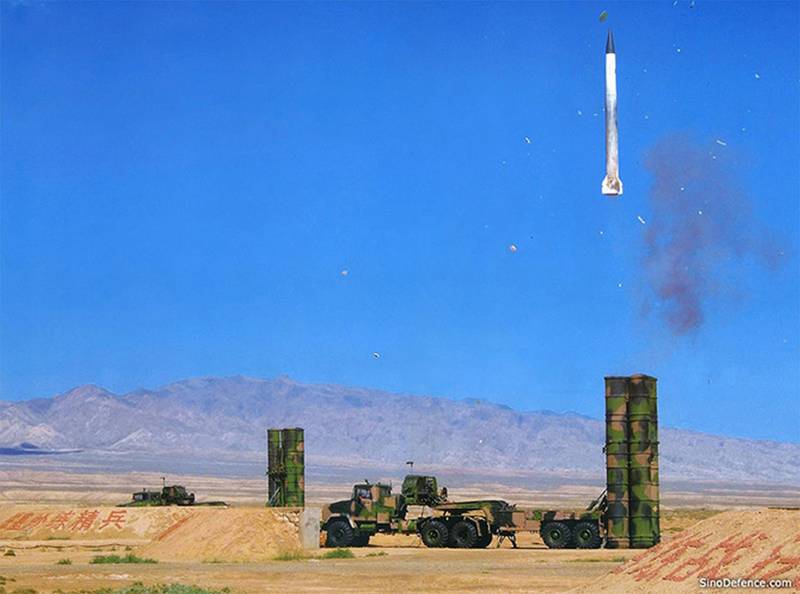
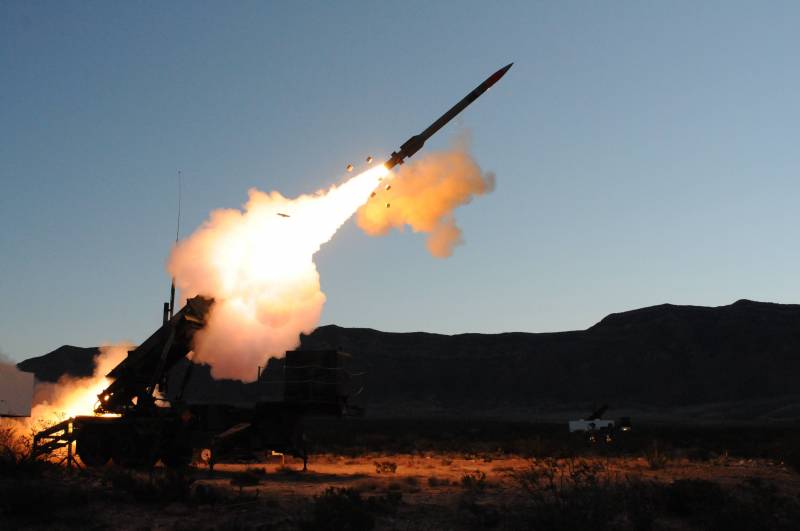
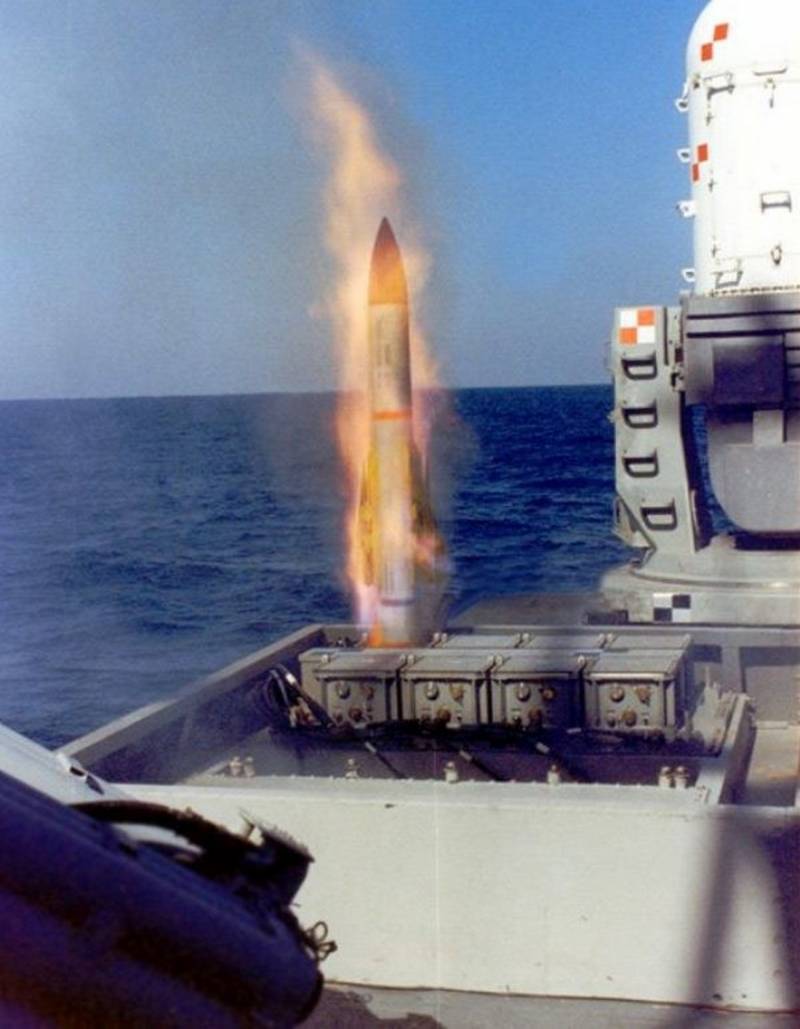
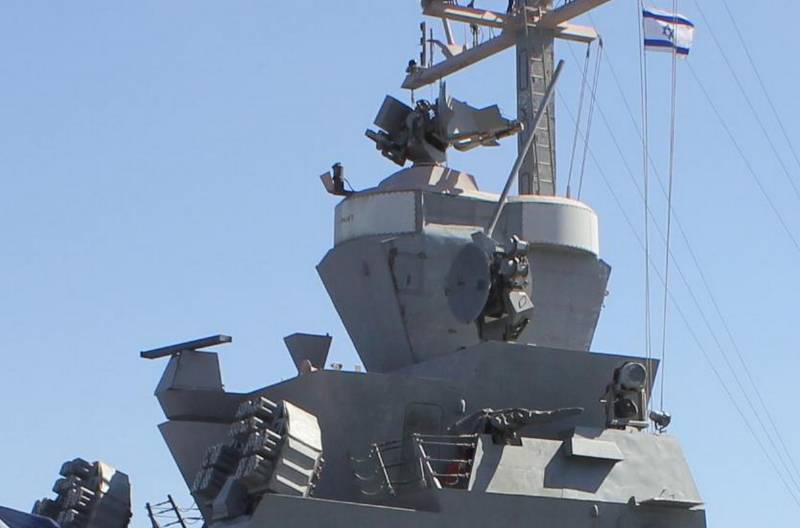
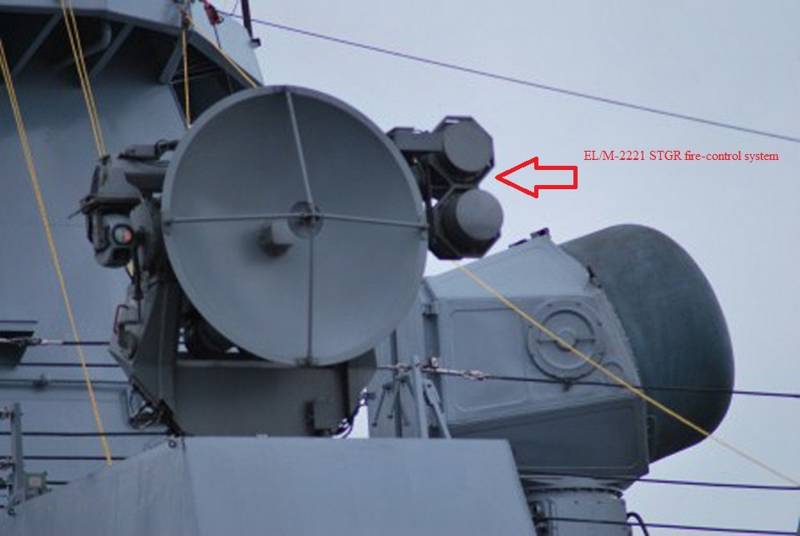
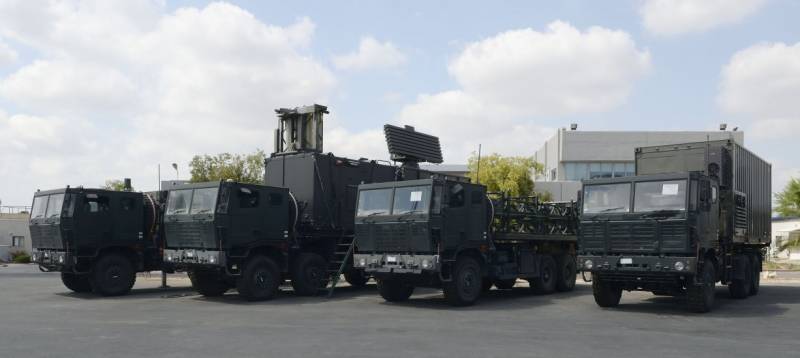
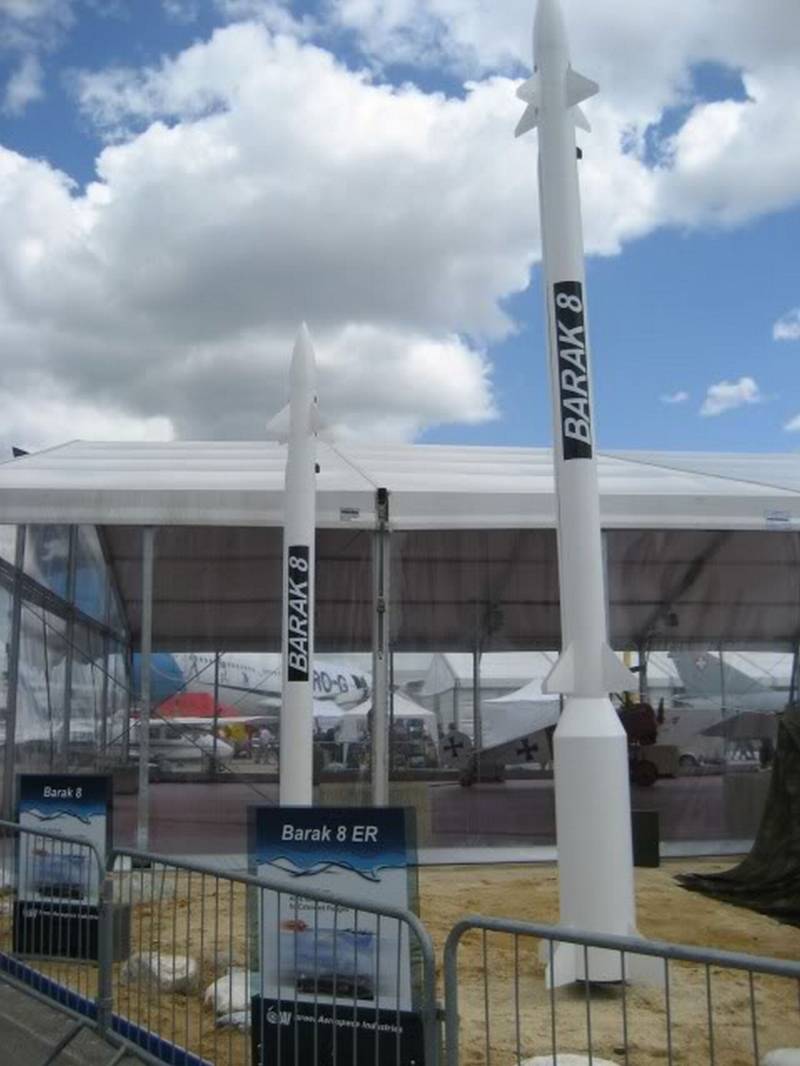
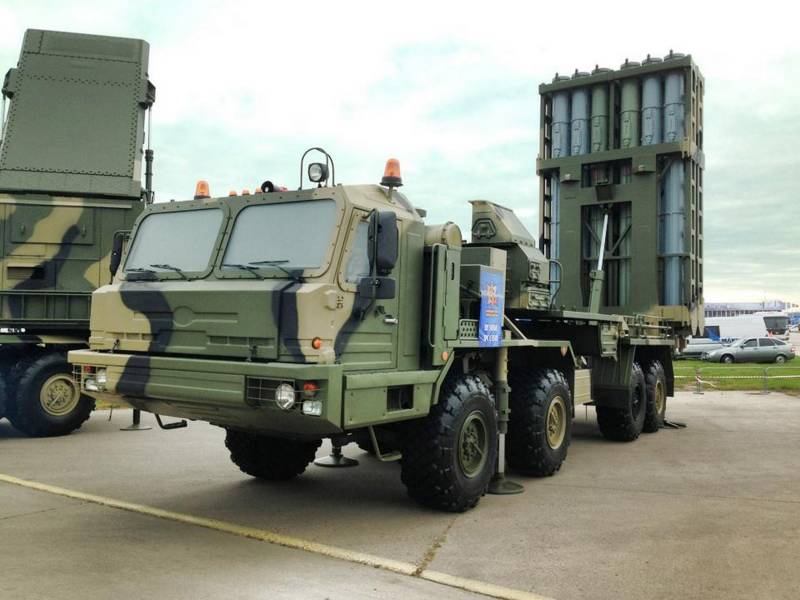
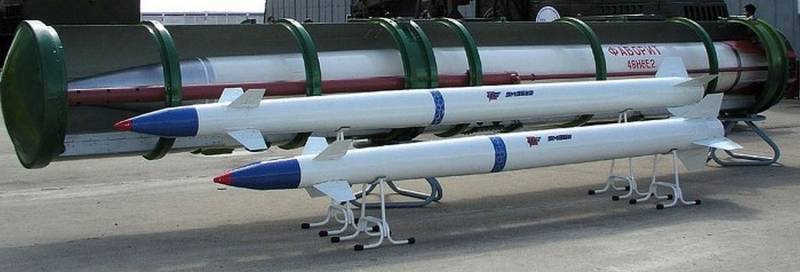
Information